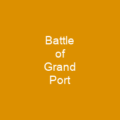Port Louis is the capital city of Mauritius. It is the country’s economic, cultural and political centre. According to the 2012 census conducted by Statistics Mauritius, the population was 147,066. The city has a hot semi-arid climate under Köppen’s climate classification.
About Port Louis, Mauritius in brief

The Port is named in honor of King Louis XV. The harbor adjoins the main city, with the port currently comprising three terminals. Terminal I contains a total of 1180 meters of quays with six berthing positions for cargo, passengers, and fishing boats. Terminal II includes specialized facilities for handling and storing sugar, fish, tallow, and caustic soda. Also present in Terminal II is a dedicated 124-meter cruise ship jetty, with a dredged depth of 10 metres. Terminal III has two 280-meter quays, having two super-post and specialized for handling container ships, having eight gantry cranes and five post-post-Panamax ships. Overall the port contributes 2% to the GDP of the country, and 1% to its cruise ship industry. It also has storage facilities for bulk ethanol and ethanol and tie-in points for large reefer containers too large to dock at the quays at the Outer Anchorage, which is still within the official boundaries of the port. In the late 1990s, expansion of the tourism industry led to considerable development in Port Louis, with many shops, hotels, and restaurants being built in the Caudan Waterfront area. Port Louis was selected to house both the main harbor and fort for the island. During this period of French colonization, Mauritius was known as Ile de France. The French governor at that time, Bertrand-François Mahé de La Bourdonnais, contributed to the development of the City.
You want to know more about Port Louis, Mauritius?
This page is based on the article Port Louis, Mauritius published in Wikipedia (as of Dec. 29, 2020) and was automatically summarized using artificial intelligence.







